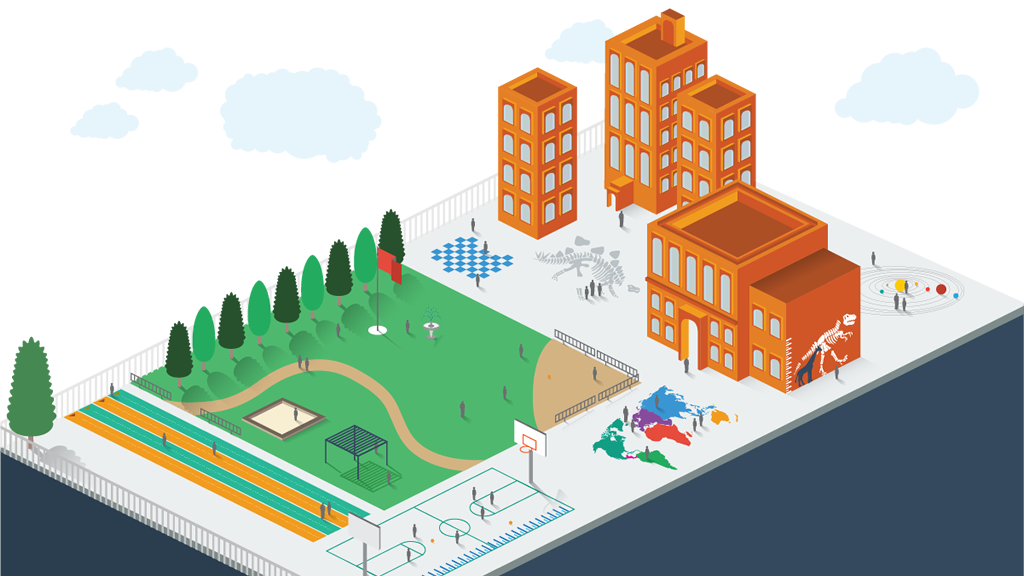Can environmental graphic design play an active role in elementary education?
Graphic Learners
What We Did
We explored opportunities to leverage graphic design as an educational tool in elementary school environments. Our goal is to enrich the learning environment with education content through simple, unconventional design solutions. We began this research by interviewing educators, not-for-profit leaders focused on using design to improve education, and designers with prior experience developing graphic programs for schools.
We visited a school in East Harlem with Publicolor, a New York–based not-for-profit, to illuminate the challenges of environments faced by many students, particularly in lower-income communities. Based on this experience, we developed a series of concepts that implement graphic design to improve educational environments, which we then reviewed with educators in the New York tristate area for initial reactions, feedback, and suggestions.
The Context
In a competitive and fast-changing global economy, education has never been more important—and successful education starts young. Yet many of today’s school environments are bare, dark, harsh, and uninspiring for today’s elementary school students. This represents a fundamental failing to start students off on the right foot, and a challenge that we believe great design can help solve.
Great schools, and the designers who help create them, use design to brighten space, promote school spirit, and inspire and engage students. But even many of the best schools are still missing an opportunity to leverage their buildings—and the walls, floors, windows within—directly in the educational process.
The Results
The design of education environments can serve not only aesthetic, inspirational needs but also practical ones. The integration of architecture and environmental graphic design communicates and reinforces core concepts and ideas related to the students’ ongoing studies. Importantly, this opportunity applies to all learning environments—low cost can yield high-impact results. We believe creative, unexpected design intervention can assist current schools that are struggling to keep students engaged, and also act as a catalyst for a new type of school environment that sets a precedent for high-performance learning facilities. The success of not-for-profits such as Publicolor in using design to improve student outcomes serves as inspiration for our ideas.
What This Means
We identified a set of core educational areas or concepts with the greatest opportunity, then developed a series of design solutions to demonstrate the possibilities for each.
Show Measurement at the Student Scale.
Use the physical environment to communicate measurement relative to other subjects or students’ own experience.
Make History Personal.
Display historical individuals or items in a way that invites interaction and students placing themselves into the tableau.
Connect Language to Physical Objects.
Install words onto objects themselves, using multiple languages to provide short lessons in translation.
Let Structure Communicate Structure.
Use school buildings to highlight architectural, engineering, and sustainability concepts, processes, and ideas.
Integrate Learning and Playing.
Involve students in the creation and application of graphics, and make them interactive or changeable to keep the process going. Outdoor surfaces and playgrounds are an opportunity too.
What’s Next?
Based on outreach to educators, we believe there is significant opportunity to implement these solutions in education environments.
We hope to develop a series of design solutions that can be implemented easily in existing and new facilities in partnership with our educational designers. We are also exploring opportunities to create solutions that could be implemented directly by students and/or teachers.
Learn More
Team
John Bricker, Fitgi Saint-Louis, Andrea Plenter, Charlie Flexon, Laura Gralnick, AJ Mapes, Andy Schoonmaker, Fabiano Vincenzi
Year Completed
2015
Comments or ideas for further questions we should investigate?
